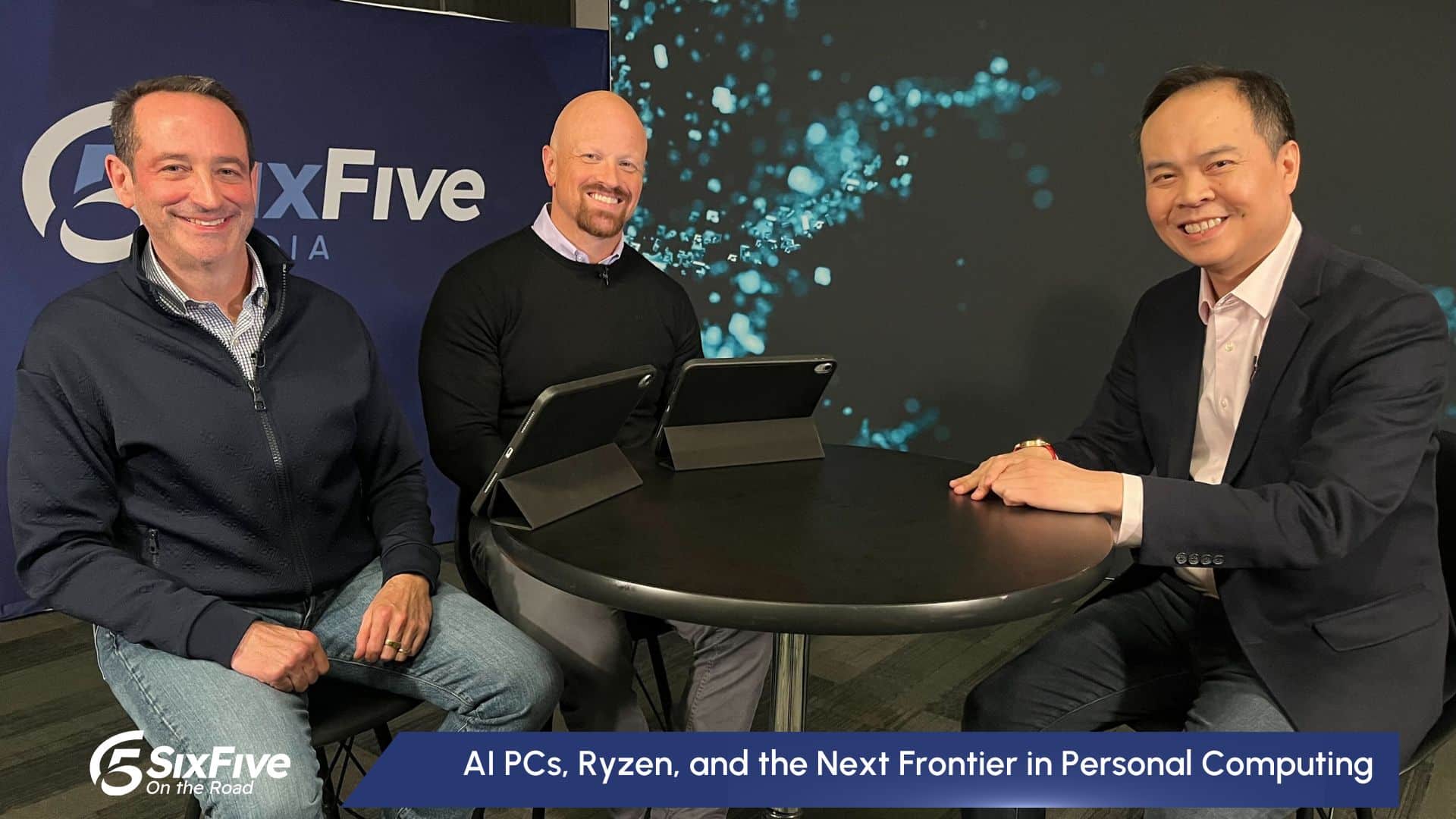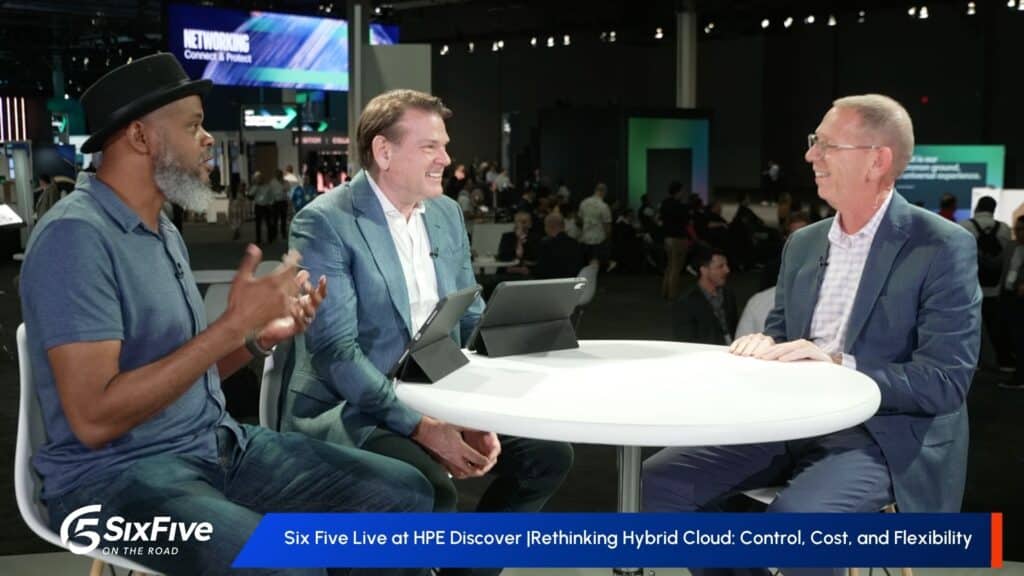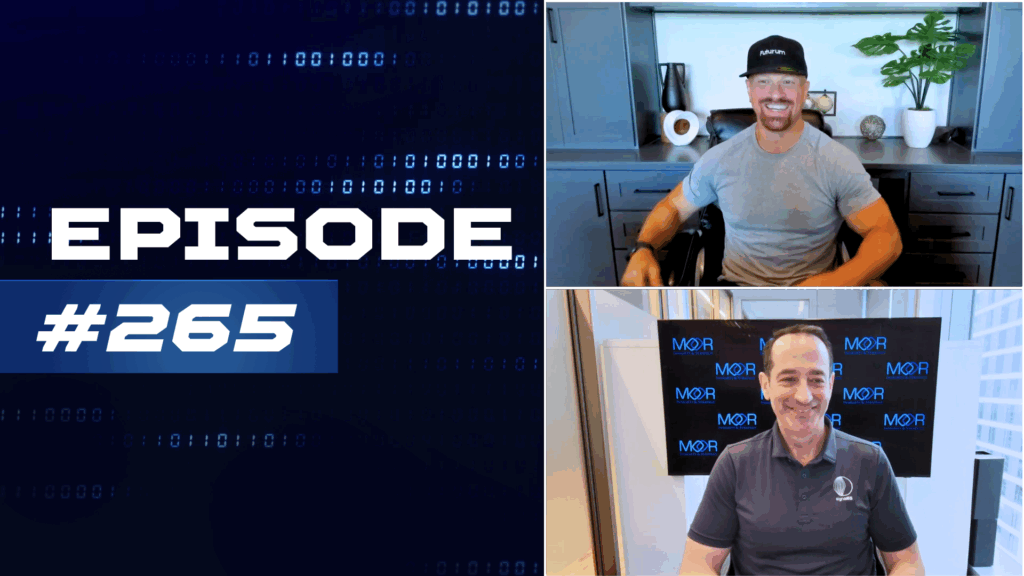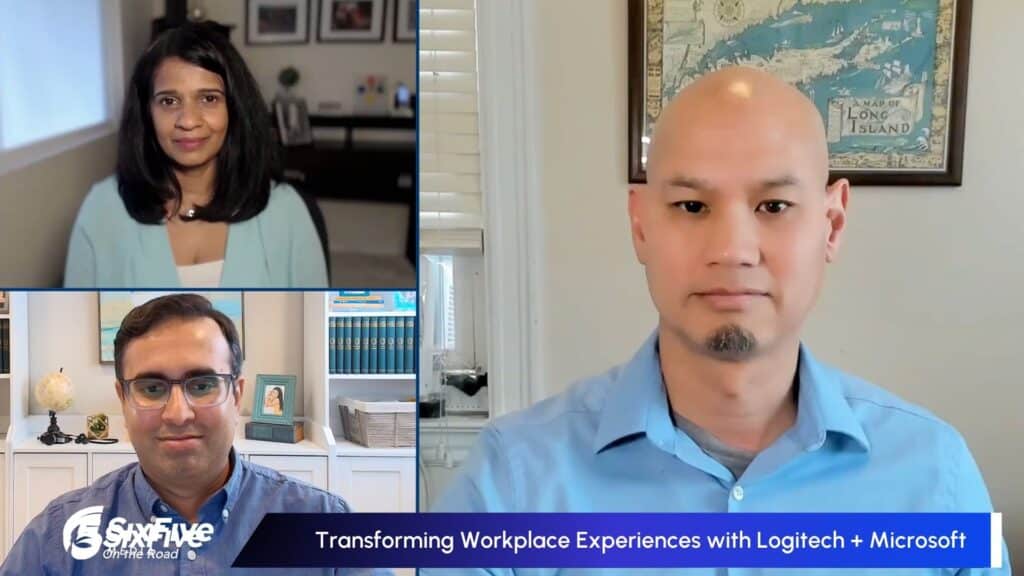How is AMD redefining the landscape of computing and AI?
At AMD Advancing AI 2025, hosts Daniel Newman and Patrick Moorhead are joined by Jack Huynh, Senior Vice President and GM, Computing and Graphics Group, at AMD. Jack shares insights into AMD’s recent announcements at COMPUTEX, including powerful new CPUs and AI GPUs designed for creators, the innovative Ryzen AI, and AMD’s strategy for disrupting the market with high-quality graphics cards at accessible price points.
Key takeaways include:
🔹The Hybrid AI Revolution: Discover how local AI computing is evolving alongside cloud services, and AMD’s critical role in fostering this powerful, hybrid future.
🔹Transformative User Experiences with Ryzen AI: Learn about the cutting-edge experiences enabled by Ryzen™ AI, including enhanced security and advanced creative tools, showcasing AMD’s leadership in the Neural Processing Unit (NPU) space.
🔹Disrupting the Graphics Market: Unpack AMD’s bold strategy with the launch of the RX 9060 XT and RX 9070 graphics cards, setting a new standard for premium performance at consumer-accessible price points.
🔹Expanding into the Commercial Sector: Gain insights into AMD’s significant commercial expansion, highlighted by a new commercial fleet unveiled with ASUS at COMPUTEX, and the vast opportunities this presents.
Learn more at AMD.
Watch the full video at Six Five Media, and be sure to subscribe to our YouTube channel, so you never miss an episode.
Or listen to the audio here:
Disclaimer: Six Five On The Road is for information and entertainment purposes only. Over the course of this webcast, we may talk about companies that are publicly traded, and we may even reference that fact and their equity share price, but please do not take anything that we say as a recommendation about what you should do with your investment dollars. We are not investment advisors, and we ask that you do not treat us as such.
Transcript:
Patrick Moorhead: The Six Five is On the Road here in San Jose. We are at AMD’s Advancing AI event. Daniel, it’s been a great event. A lot of AI, pretty much everything.
Daniel Newman: Yeah, I mean, it was a big moment. We know each year, you know, the world comes to this and if you just kind of look at the energy online, you look at the coverage in the media, a lot of people are paying attention. This AI is a multi trillion dollar opportunity. When you get to numbers that big and you get to things that are going to actually change the world, the way we work, the way we live, the way we shop, it gets a lot of eyeballs. So it’s been a great day.
Patrick Moorhead: Yeah, that’s right. And strategically, one of the first things Lisa does when she gets up on stage, which I really appreciate, is she sets the strategic context and its AI from the data center to the data center edge to the client, and pretty much everything in between. And I can’t imagine a better guy to talk about AI on the edge than Jack Huynh. Welcome back to Six Five, Jack.
Jack Huynh: Thank you, Pat. Always good to see you. Yeah, you too, man.
Daniel Newman: Thank you.
Patrick Moorhead: We’ve been seeing you on stages around the world
Jack Huynh: A little bit.
Patrick Moorhead: Yeah, it’s been crazy.
Daniel Newman: You know, today was a day, Jack. It was very data center centric here at advancing AI. But over the last few weeks, the news payload, that’s our new word, has been palpable for AMD. You had Computex, you had a big thread ripper moment. So let’s just kind of start there. I mean, at Computex you announced a bunch of powerful new CPUs, AI GPUs designed for creators, small scale model training. How do you kind of see local AI computing evolving alongside the cloud, which we spent a lot of time talking about today.
Jack Huynh: That’s right. So we see a world where AI is powered by the data center for the most powerful complex models, but also works seamlessly with the endpoint. Right. For small, medium models. And one of the things I’ve always said was think big by going small. Right. So the small endpoint devices are very critical because there’s models that are 1 billion parameter, 7 billion parameter, that runs very, very well on a PC. And there’s also concerns on privacy, latency, and security. And running that capability on your PC is just going to be another hybrid model. Right. And we demonstrated at Computex you could now do voice live live voice to voice translation. You guys should watch it. We had someone speaking Chinese live at Computex and it translated to English in real time, which is really cool. And one of the things I love about that is with that type of capability, you actually bridge languages, which bridges cultures. Use AI Connected World. We also had a demo that allows you to run a radiologist using an AI model. On our aimed AI PC. You could analyze MRIs. Right. Give suggestions. Instead of a doctor spending tens or hundreds of hours, they can actually look at all the history, give recommendations. So I thought that was really cool, especially in healthcare. And then you’re also now seeing in the consumer space, obviously Copilot plus is out there. You have that click to do. But all these developers are driving their own models. And as DeepSeek has proven, small efficient models can actually run brilliantly on GPUs and even endpoint devices. So we see it as a very complementary piece from the data center to the AIPC.
Patrick Moorhead: Yeah. So Jack, when I talk to CIOs, they like the flexibility to have a set of models that they can deploy wherever they want. Right. Some of them are going to be in the data center, some of them are going to be in the industrial edge and others are going to be on the PC. By the way, it might change what might look like a large model today that runs in the data center might run on a PC tomorrow. With the performance that you’re putting with Ryzen AI, you have the most NPU tops. That’s right out there. Very impressive. You’re driving, enabling developers to create new experiences. A lot of chicken or the egg conversation in the industry right now and want to get an update. What are some of these applications? You rattle off a few from Computex. Any other ones that you see that maybe people that exist or you see in development that maybe people might not be aware of?
Jack Huynh: That’s right. So the way I think about the experience that we’re enabling is in three categories. One is customization. Second, automation and then deep reasoning. So customization on PC is you want that PC to recognize how you’re using and just intuitively see what you’re doing. Right. I think that’s one of the visions of Total Recall and then automation. There’s still a lot of mundane tasks like search.
Patrick Moorhead: Sure.
Jack Huynh: I mean semantic search. There should be a way you could search on your PC very, very quickly, intuitively, or even as you’re chatting with a friend, you say, hey, I was just on vacation in San Diego. Then it pulls up your pictures automatically for you to just send. Right. And then deep reason, we see a huge trend there that it could help enterprise Businesses especially sales training where it brings up best practices. Hey, this is the value props. This is how you sell your product. Hey, these are a list of customers. You haven’t contacted them in two weeks. Contact. Oh, here are the metrics. So I think with all the analytics we just saw the very beginning of AIPC and then with Strix Halo, which is our Ryzen AI Max, it can actually run a 70 billion parameter model which is pretty incredible. That’s because of the 128 gig of unified memory between CPU and GPU. It’s actually faster than the Apple N4 Pro. So that type of capability that we’re enabling, we’re actually at the very beginning of this journey. I still feel like there’s so much more that’s left to be imagined. And we’re just at the very beginning of this.
Patrick Moorhead: Yeah, I mean we just got an operating system that is out there and the new Windows features have just been turned on and some of these agentic frameworks had a lot of big announcements built the same week as Computex using Edge for instance. Being able to create your own agent to do things on your PC is pretty extraordinary.
Jack Huynh: It is.
Patrick Moorhead: We’re definitely at the beginning.
Jack Huynh: Definitely. I mean I see it as a way that we got to get these agents where you use it every day like ChatGPT.
Patrick Moorhead: Sure.
Jack Huynh: Right. Where it’s not just niche and the key is having these agents self learn. So you can see agents in the healthcare space like with the radiologist example or even in the enterprise where you’re just sifting through just so much analytics in the financial space or even engineering where we can look at physical design. Can we eliminate white space? Right. Can we automate place and route? So there’s many applications of AI and the key now for us is making it very seamless.
Patrick Moorhead: Sure.
Jack Huynh: Very intuitive, very easy, very natural to use. And I think we’ve shown the glimpse of the future now. How do we do it in a way that people could use it every day? Use it in a very simple way.
Daniel Newman: Yeah, there’s a lot of opportunity there. When he made the comment about the Mac comparing the M4 I almost wanted to ask if they had liquid glass.
Daniel Newman: You know, I mean while you’re over here doing AI stuff.
Jack Huynh: Yes.
Patrick Moorhead: Yeah.
Daniel Newman: You know, they’re over there wagging. Anyway, I’ll leave it alone. I can’t help myself. But you also are, you’re very focused on this price performance on the, you know, GPU side.
Jack Huynh: That’s right.
Daniel Newman: So you launched the 9060 XT Best of Best in Class Performance at what, under $350. You know, the 9070 which also is priced very effectively. It seems that you’ve, you’re going after it right now. You’re basically saying we think we can deliver the performance.. And we can also challenge the market on price because it’s a little more sensitive. Right. This is the consumer. How do you kind of keep going after this? We don’t want it to be a race to the bottom, right?
Jack Huynh: Correct.
Daniel Newman: You got to be making a margin. The street wants you making a margin. You want to still be seen as premium, but it seems like you’re finding that balance. How do you keep that going over the next year or two?
Jack Huynh: Yeah, I mean part of our mission is to enable the best graphic gaming performance but broaden accessibility because we want to enable as many people to touch our technology as possible. We got one of the developers and we want to be as aggressive as possible at these price points out the gate. I think it’s very important. But it’s not just pricing, it was pricing. We would have done it many years ago. The key for the 97 XT and the 96 XT we just launched actually just last week on shelf is we focus heavily on software. If you look at our quality of service, day one drivers, super stable. So what I tell my team is quality is just as important as performance. Actually maybe more important than performance because we want a seamless out of box experience. That’s one of the reasons why the 970 is doing so well because it just works. There’s not these unstable drivers that we see the competition currently have. But more importantly we enabled FSR4 which was our first machine learning based model for super resolution. I think we surprised a lot of people in one generation. We’ve actually exceeded Nvidia’s DLSS CNN model and we’re right behind the Transformer model. Then we also announced FSR Redstone which is the next step in FSR. So we’re going to bring neural radiance, caching, machine learning based ray regeneration, machine learning based frame generation. That’s going to come in the second half of this year which will then further improve the experience of all RDA4 users. That includes the 97 XT as well as the 9060 XT. So I think it’s that full package of offering great software, day zero drivers, the best performance per dollar and then enabling a broad ecosystem so we win the studios and developers. I think that’s what makes this product so exciting. And we could continue this right, because it’s not just price, it’s everything else that we’re doing and having that roadmap for our users to show that you can actually have a great, great product. And we’re sold out in the 97 XT. Yeah, the more we build, the more selling out instantaneously, which is. And we haven’t had this type of GPU launch in probably over 10 years. Pat, it’s been a minute.
Patrick Moorhead: You know, it’s interesting, Jack, when you started kind of laying the cookie crumbs for what your strategy was going to be before you launched the card, I was like, oh, okay, here we go, like wondering what’s going to happen. Let’s really knock it out of the park in a mid range card. And then you came out and you just crushed it. I mean, I haven’t seen lines like this in a long time for AMD graphics cards. And then it was, well, okay, how many can they make, right? Are they limiting this? You can barely get a hold of this and saw a lot of volume coming in. Now ultimately when you get a screaming card, you’re going to get into the stock out situation, but hopefully your partners are working hard to fill this back up or you can make it. Good business for you and a good experience for gamers too.
Jack Huynh: Yeah, we’re working very hard on a supply chain. I mean the 97 XT sold more than 10x than any other previous generation GPU. So it’s been phenomenal. It probably exceeded all expectations. We’re super happy with the product and launch. Then FSR. When we first launched the Nice MX we had 30 titles. Then at Computex we said we’ll have over 60. So we’re quickly ramping in the game studios. But more importantly, the developers are excited about RDN4. I mean they want to implement FSR4 as fast as possible because they see the value that we bring. And now FSR Redstone, we’re taking another. I think people are very surprised that, wow, the pace of innovation sure is going to be that fast. That’s right. So you could buy 97 XT or 96 XT and know that Redstone is coming in the second half of this year.
Patrick Moorhead: Yeah, I want to pivot to a commercial PC. So overall AMD is gaining market share in the PC market and I think under your leadership came in and really started to make a difference in the commercial PC segment. First it was Dell, right? You and Sam on stage, hugging each other, him on your stage saying some very nice things.
Daniel Newman: AMD people hugging people named Sam.
Patrick Moorhead: How about that? Exactly. Imagine that that’s good, Dan, you’re good for one of those. One a day. I think you’ve had three today, so.
Daniel Newman: Banger.
Patrick Moorhead: Yeah, but. And then you went to Computex and made an announcement with Asus.
Jack Huynh: Correct?
Patrick Moorhead: ASUS commercial. Talk about the market a little and maybe your aspirations of what you are trying to do in the market. And quite frankly, you know, we had this conversation over dinner once. How are you going to gain more shares?
Jack Huynh: Sure, sure. So we’re very underrepresented in commercial enterprise given the strength of our product portfolio. And look, we’ve always had great products, right? Great performance, multi core. But the next step of enterprise is not just raw performance, it’s manageability.
Patrick Moorhead: Yeah.
Jack Huynh: Is security stable image is transitioning a fleet from VPRO to AMD Pro. And when I first looked at the strategies, we gotta make sure we have the portfolio and the design wins. Right. So I thought winning Dell was great. We’ve also added desktop to our portfolio, both HP and Lenovo, to complete not just notebooks. Also, I know I love desktops. And now ASUS has added a fleet of commercial notebooks and desktops to AMD too. So for me we now have the portfolio. So the next step is. Okay, how do we transition the fleet to AMD? And I’m spending a lot of my time with enterprise accounts personally. So our customers. Customers, Right, right. And what I’ve learned is it’s not just performance. Right. It is the stability, the manageability, the security. How do they trust AMD in the next five to 10 years? And we’re winning business. We brought on many, many new accounts. We can absolutely do it. Sometimes they just don’t know. And also the battery life is phenomenal too.
Patrick Moorhead: Sure.
Jack Huynh: So we got great performance, great battery life, great energy efficiency. We now have AMD Pro which has all the features of remote manageability, security. It’s just not telling that story to the enterprise and winning these accounts and then more importantly, having testimonials. We need hundreds of these testimonials, not just a handful, but we’re gaining share. And commercially, my number one priority is enterprise. Right now it’s probably where I’m spending half my time.
Patrick Moorhead: Are you seeing some lift? For instance, a very competitive enterprise data center chip called EPYC.
Jack Huynh: Yes.
Patrick Moorhead: Are you seeing any correlation between an EPYC customer and a Ryzen Pro customer?
Jack Huynh: Definitely. So epic. We’ve approached 40% market share. And look, if you’re using Epyc, it makes perfect sense to use a Ryzen Pro.
Patrick Moorhead: Yeah, I think what it says is that AMD is strategic.
Jack Huynh: That’s right.
Patrick Moorhead: If you trust us for strategic data centers, you can trust us for strategic cloud.
Jack Huynh: You got it past. And we proved we can actually deploy at scale with Epic, and now it’s just ramping that motion in Ryzen. And historically, we did not have the portfolio, we didn’t have Dell, we didn’t have the desktop. The past few years. We’ve now corrected that. Now the next step is going to be to go to market. It’s going to be sales training. And also one of my focuses is on the varsity. Yeah, right. So we have to empower, channel and to channel. Right. The insights of the world, the CWS, to give them programs, tools, so that we can actually scale that part of the business too. So for me, it’s focused on the top 100 accounts. You get the mid market, which is the top 5,000. They have SMB, these guys buying 5 or 10 PCs.
Patrick Moorhead: Sure.
Jack Huynh: So then we gotta enable that broad channel so that we build that scale. And look, we’re gaining a lot of traction. I think everyone’s very excited about AMD because one thing I learned about sales guys is they like to sell leadership. So when you have a leadership portfolio, it’s a little bit easier.
Patrick Moorhead: Oh, yeah.
Jack Huynh: But the key is just getting that momentum and that traction. And you’re seeing us gain share in this space and you’ll see us gain more share in the coming quarters.
Daniel Newman: You only have so much capital in any relationship, so it’s always easier to sell the thing the customer actually really wants. It’s also known as being the best. So anyone that’s ever been the salesperson of the inferior product knows you have to be a lot better. You know, there’s people that can be very good at selling a product that everybody wants, but it sounds like you’re also, you know, focused on the partnerships. You’re going deeper, you’re getting in front of customers yourself, which I always appreciate. An executive that goes out there and makes it happen. Never miss a number. It’s one of my things.
Jack Huynh: Correct.
Daniel Newman: And then on top of that, it sounds like you’re also getting deeper with partners, deeper with channels. And I think that’s what it’s going to take to win. I think, Pat, your connection to EPYC is really good. The strength and the growing power of instinct will also help pull. But, you know, AMD has a very loyal PC and client. And so across the board, whether it’s the GPU or the AI PCs, it seems like you’re making a lot of progress. Jack, I want to thank you so much for sitting down with us.
Jack Huynh: Of course.
Daniel Newman: The only thing we didn’t do in this conversation is race our cars.
Jack Huynh: But we’ll do that anytime. Anytime.
Daniel Newman: We’ll do that at some point.
Jack Huynh: We have a great dinner, race some cars.
Daniel Newman: Let’s race first because you know, I tell you what, once you’ve eaten it’s hard to get in that thing and go fast. But let’s do it again sometime soon.
Jack Huynh: Definitely. Thank you. Thank you so much for having me.
Daniel Newman: Yeah. Thanks Jack. Thanks, Jack.
Jack Huynh: Take care. I appreciate that. Of course.
Daniel Newman: Then thank you everybody for joining us. Here we are The Six Five. We’re on the road here at Advancing AI for AMD in beautiful San Jose, California. Check out all the coverage of this event and subscribe and be part of our community. We appreciate you tuning in but we got to say goodbye for now. We’ll see you later.
Author Information
Daniel is the CEO of The Futurum Group. Living his life at the intersection of people and technology, Daniel works with the world’s largest technology brands exploring Digital Transformation and how it is influencing the enterprise.
From the leading edge of AI to global technology policy, Daniel makes the connections between business, people and tech that are required for companies to benefit most from their technology investments. Daniel is a top 5 globally ranked industry analyst and his ideas are regularly cited or shared in television appearances by CNBC, Bloomberg, Wall Street Journal and hundreds of other sites around the world.
A 7x Best-Selling Author including his most recent book “Human/Machine.” Daniel is also a Forbes and MarketWatch (Dow Jones) contributor.
An MBA and Former Graduate Adjunct Faculty, Daniel is an Austin Texas transplant after 40 years in Chicago. His speaking takes him around the world each year as he shares his vision of the role technology will play in our future.





